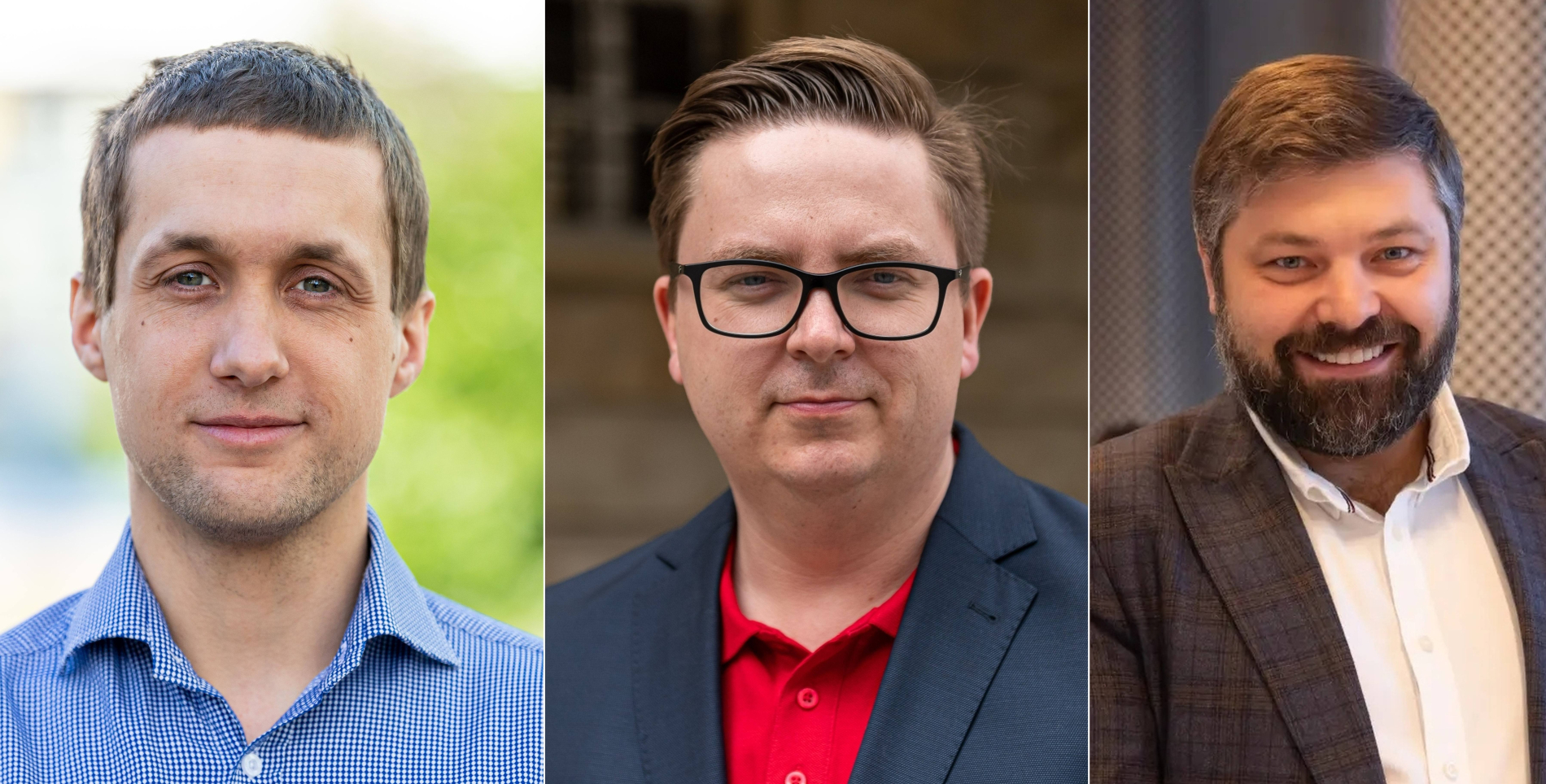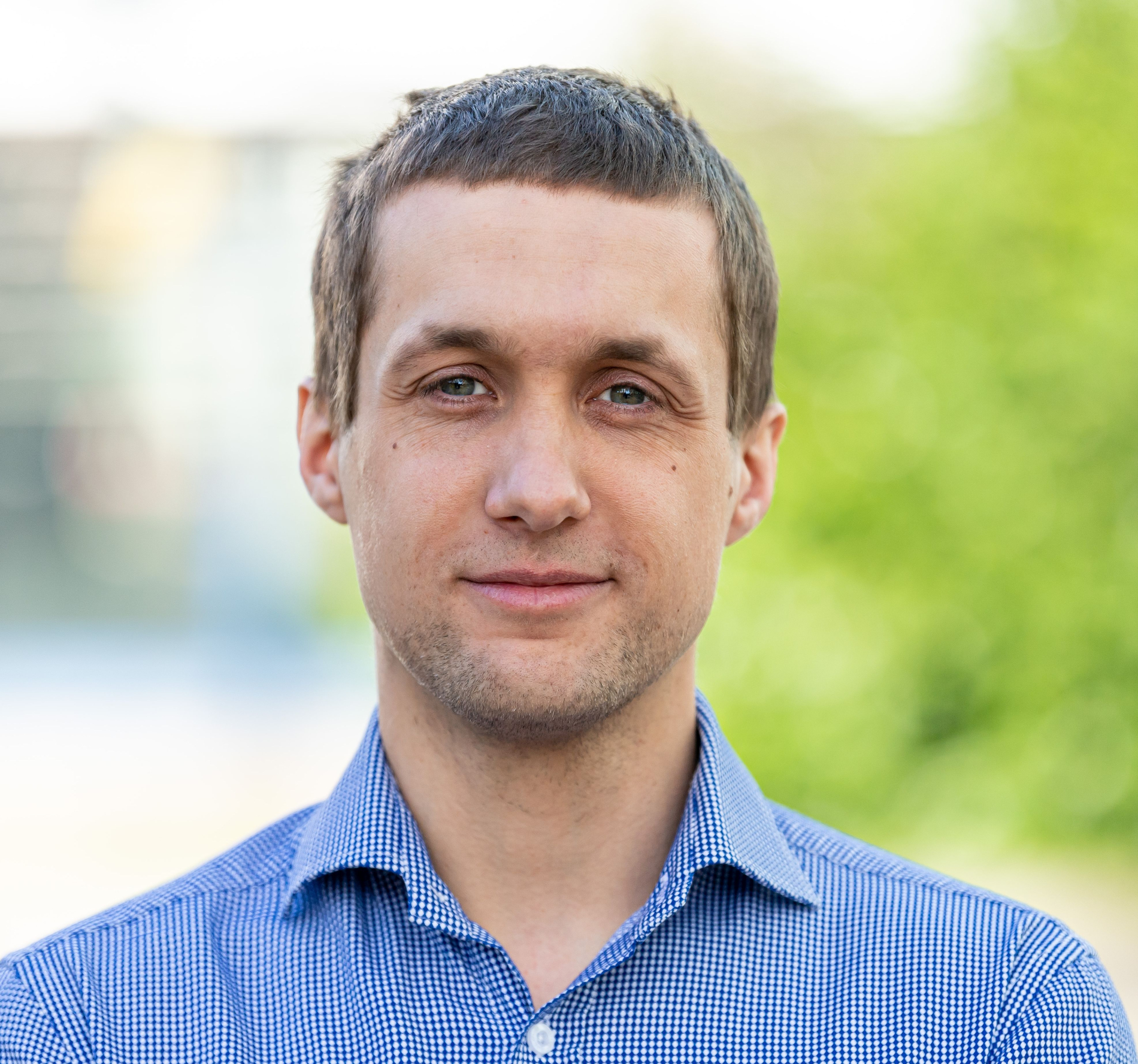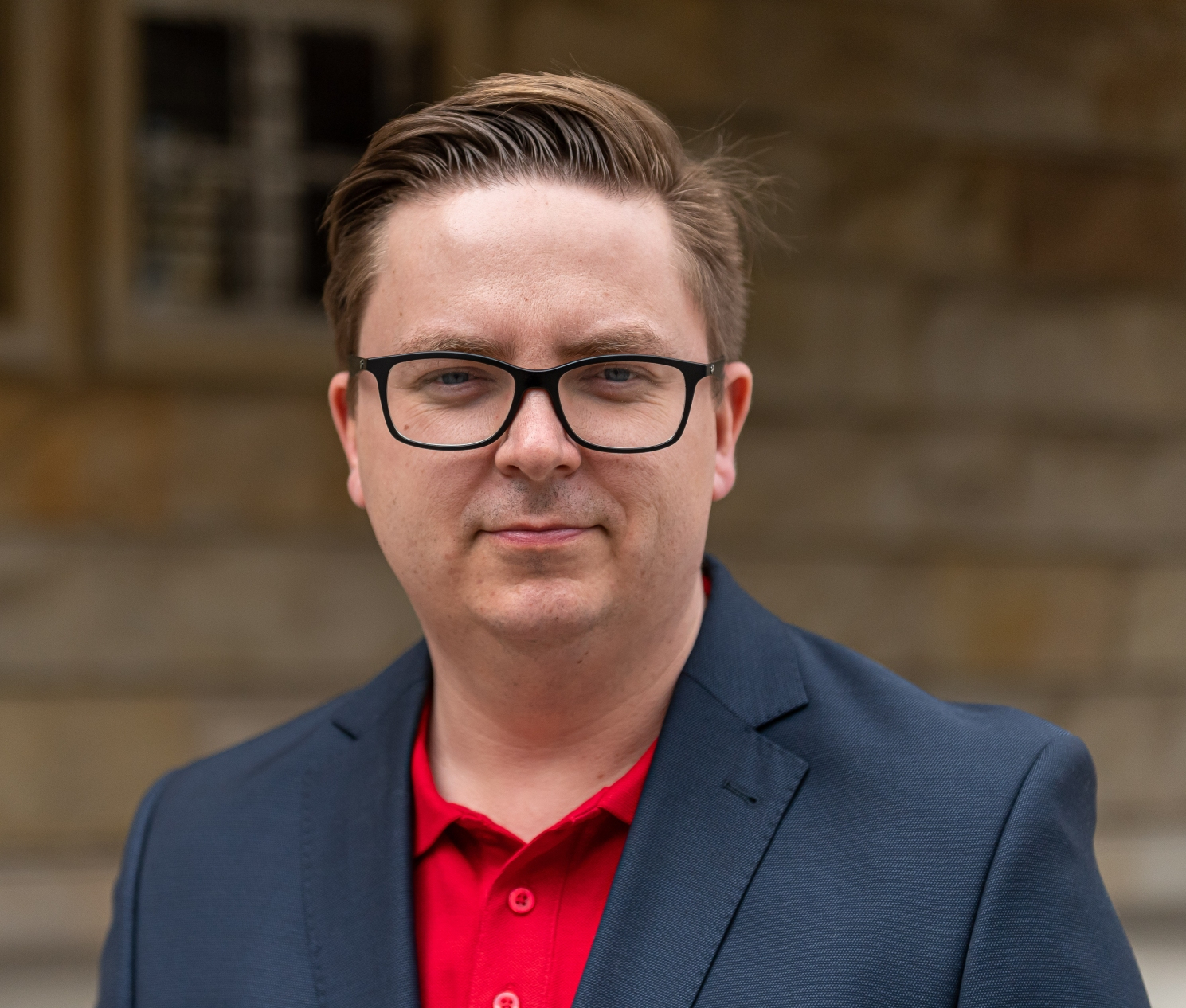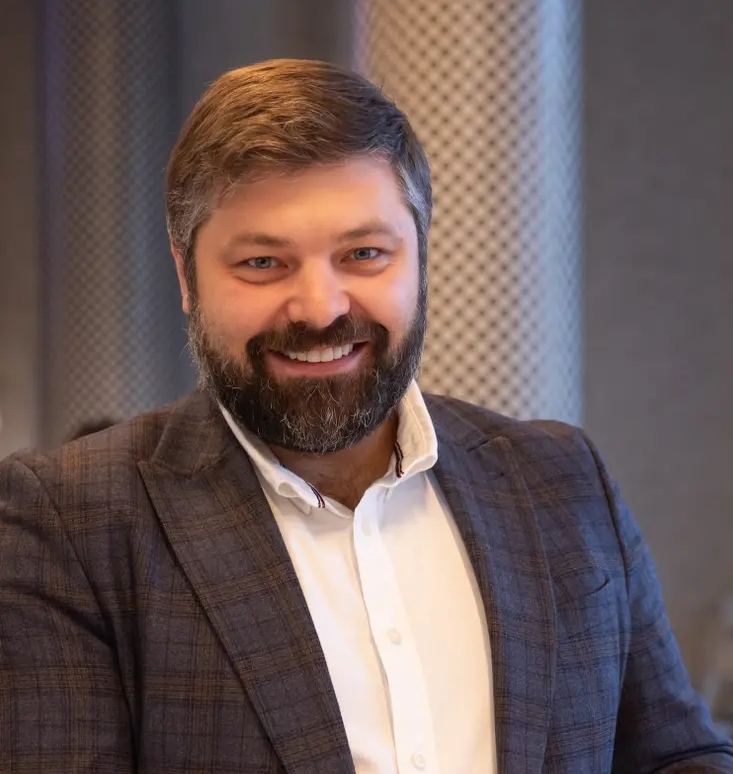YOUR BROWSER IS OUT-OF-DATE.
We have detected that you are using an outdated browser. Our service may not work properly for you. We recommend upgrading or switching to another browser.
Date: 24.06.2024 Category: general news, science/research/innovation

Three of our researchers have received grants from the Foundation for Polish Science (FNP) under the new First Team FENG programme. The funds granted amount to over 12 million PLN.
Developed by the Foundation for Polish Science, First Team FENG is a brand-new programme that makes it possible to obtain funding to set up a research team, purchase equipment, and conduct innovative research with application potential in Poland.
Each project involves plans to work with a foreign research partner and a domestic business partner, with financial support provided only to the Poland-based applicant research organisation.
The first call for applications resulted in 202 projects from 68 research organisations. Thanks to the European Fund for the Modern Economy (the Polish acronym – FENG), funding – a total of 101,361,052 PLN – was awarded to 27 projects, including three from Wrocław University of Science and Technology:
Maciej Kowalczyk, PhD (Faculty of Electronics, Photonics and Microsystems) – “Ultrastable pulse lasers covering the spectral range from near to far infrared” – amount of funding: 4 million PLN, Professor Łukasz Sadowski (Faculty of Civil Engineering) – "Intelligent technologies for the production of concrete based on waste post-copper slag enriched with CO2 captured from industrial production for zero-emission construction (SPHERE)” – amount of funding: 3.95 million PLN, Tomasz Kajdanowicz, PhD, Eng, Professor of the University (Faculty of Computer Science and Telecommunications) – “AITAX (AI Tax Advisor) – an innovative AI system for support in tax-related matters” – amount of funding: 3.8 million PLN.
Only two technical universities received the grants – our university (three) and the Warsaw University of Technology (one). Researchers from the Jagiellonian University enjoy as many as five.
 The project headed by Maciej Kowalczyk, PhD from W12’s Department of Field Theory, Electronic Systems and Optoelectronics will develop pulse laser radiation sources, which will emit over a very wide spectral range: from the near (wavelength of about 1 µm), through the medium (about 15 µm), to the far infrared (<300 µm).
The project headed by Maciej Kowalczyk, PhD from W12’s Department of Field Theory, Electronic Systems and Optoelectronics will develop pulse laser radiation sources, which will emit over a very wide spectral range: from the near (wavelength of about 1 µm), through the medium (about 15 µm), to the far infrared (<300 µm).
“Such ultra-wideband lasers don’t exist currently, and due to their versatility, they could become crucial to the development of modern photonics applications. I’m talking about biomedical research or advanced semiconductor technologies,” explains the W12 scientist.
In addition to extending the spectral range of the lasers, Dr Kowalczyk's team, which will include a new doctoral graduate, a scientific-technical worker, three MSc students, and three PhD students, will also look at increasing their energy efficiency and stability.
“The expected outcome is a source of laser pulses covering the entire near- to far-infrared band (1-300 µm) which will be characterised by record-breaking efficiency and the world's highest amplitude stability,” explains Maciej Kowalczyk, PhD and announces that the results will ensure the release of previously unavailable technological potential that will enable groundbreaking development and research work.
As part of the project, our researchers will engage with two partners hailing from industry and science. The former will be Polish company VIGO Photonics, a global leader in mid-infrared semiconductor technology. “It will use our laser sources to characterise prototype detectors and integrated photonic systems,” explains Dr Kowalczyk.
As for the partnership in the domain of science, it will be conducted with the group headed by Prof. Ferenc Krausz (winner of the 2023 Nobel Prize in Physics) from Ludwig and Maximilian University in Munich, with whom Dr Kowalczyk has been working closely for a considerable time. “Together, we will look at using the lasers we have developed for spectroscopic studies on human blood samples. They will allow earlier diagnosis of cancer and non-invasive monitoring of patients' health,” says the researcher.
The research project is expected to be completed by September 2028.
Concrete is the most widely used man-made building material. The latest research into this area is oriented towards reducing carbon-intensive, non-renewable, and critical raw materials in concrete, including cement and mineral aggregates.
 “So far, it’s been mainly done using fly ash from the combustion of hard coal. Having said that, as coal consumption continues to decrease, its availability is steadily declining,” explains Prof. Łukasz Sadowski from the Faculty of Civil Engineering. “One alternative could be the use of post-copper slag.
“So far, it’s been mainly done using fly ash from the combustion of hard coal. Having said that, as coal consumption continues to decrease, its availability is steadily declining,” explains Prof. Łukasz Sadowski from the Faculty of Civil Engineering. “One alternative could be the use of post-copper slag.
In their project, the W2 researcher's team will use carbon dioxide captured from industrial production to enrich post-copper slag to produce high-quality concrete.
“The added value will be that the carbon dioxide will long last in the concrete instead of being emitted into the atmosphere, which will have a beneficial effect on the environment,” says the W2 scientist. “As a result, there will be an opportunity to reduce the use of aggregates and cement, and by storing CO2, concrete will have the potential to become almost zero-emission.”
Currently, over 4 billion tonnes of concrete are produced annually worldwide. Its lifespan is at least 50 years. Therefore, the planned research of our scientists means an attractive, long-term way of storing sizable amounts of captured carbon dioxide. “The data we have extracted will be 'remembered' by an artificial intelligence algorithm in a model that we will make available to users,” describes the Wrocław Tech researcher. “It’ll allow us to predict the properties of concrete based on CO2-enriched post-copper slag without having to redo the tests that will be carried out as part of our project.”
The international team of Professor Łukasz Sadowski will be ten-strong, comprising an assistant professor, two assistant lecturers, two PhD students, three MSc students, and an additional specialist. Close cooperation with the business community is planned, with the participation of Professor Branko Savija from TU Delft, who will be a scientific partner. The results of the project will be known in four years.
There is no denying that the world of taxation is complex and dynamic. Changing legislation and inconsistent interpretations and tax rulings make it challenging for entrepreneurs and tax advisers alike to keep abreast of the current state of the law and the position of tax authorities and courts.
 “Manual searches for interpretations and rulings on tax matters in available databases or websites are time-consuming and often inefficient,” explains Tomasz Kajdanowicz, PhD, Eng, Professor of the University from the Faculty of Computer Science and Telecommunications, adding that it can take hours or even days to find the right interpretation or judgment that exactly matches a specific factual situation.
“Manual searches for interpretations and rulings on tax matters in available databases or websites are time-consuming and often inefficient,” explains Tomasz Kajdanowicz, PhD, Eng, Professor of the University from the Faculty of Computer Science and Telecommunications, adding that it can take hours or even days to find the right interpretation or judgment that exactly matches a specific factual situation.
In addition, drawing up an application for a tax interpretation in an individual case is a process that requires not only in-depth knowledge of tax law, but also the ability to precisely describe the facts, state the taxpayer's position, and formulate relevant questions. Mistakes in this respect can lead to inappropriate interpretations.
“Faced with these challenges, we saw an urgent need to streamline the process of finding tax interpretations and rulings and preparing interpretation requests,” says the W4 researcher.
The AITAX project, headed by Professor Kajdanowicz, plans to develop a system that makes it possible to effectively define facts, search for similar cases, summarise the positions of tax authorities and courts, and generate excerpts of requests for interpretation, thus allowing the improvement of efficiency of work of tax advisors, accounting offices, and entrepreneurs.
To this end, Wrocław Tech researchers intend to create a repository for storing and semantically indexing tax documents, algorithms for representing tax cases in embedding space, and a mechanism for finding similar cases based on semantic embeddings. They will also create a conversational agent (chatbot) for the interactive definition of facts and a method for the aggregation of collections of interpretations and court rulings, as well as a generator of descriptions for tax interpretation requests.
Professor Kajdanowicz’s team will include a person fresh from their PhD training, as well as two PhD students and two undergraduates. The project will be consulted with mKomornik and the law firm Olesiński i Wspólnicy. The partner responsible for the substantive part of the AI methodology, planning internationalisation plans, and seeking implementation opportunities abroad is Professor Nitesh Chawla from the University of Notre Dame, USA. The whole project will take three years.
Our site uses cookies. By continuing to browse the site you agree to our use of cookies in accordance with current browser settings. You can change at any time.